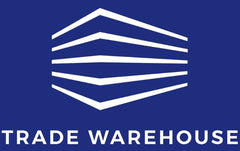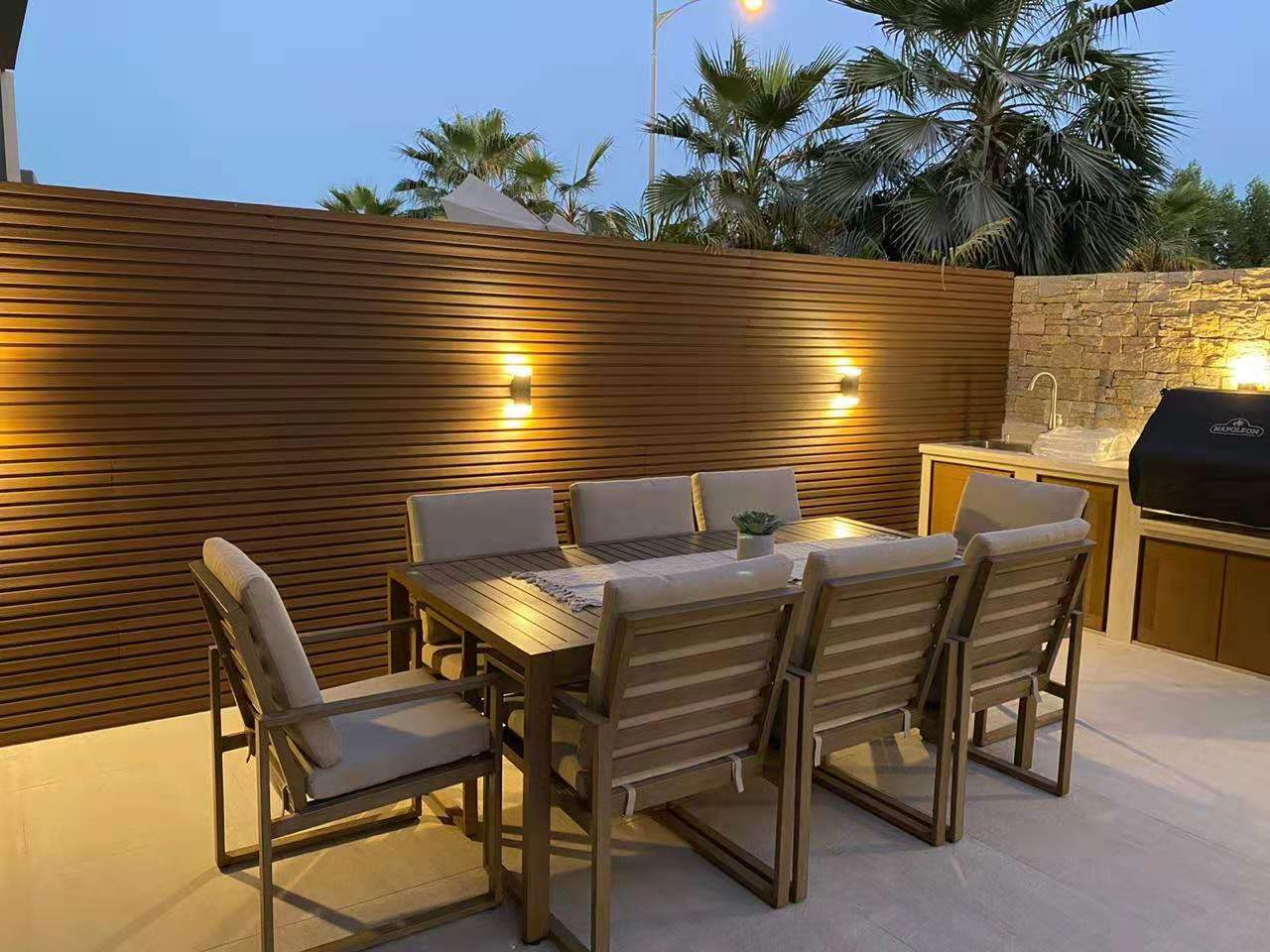Internal wall cladding is quickly becoming a popular choice for homeowners looking to elevate the aesthetics of their living spaces. We supply a wide range of cladding options, in a range of colours to suit your project needs.
More than just a protective covering, wall cladding adds texture, warmth, and personality to any room.
Unlike traditional wall treatments such as paint or wallpaper, cladding offers a range of materials and finishes, catering to different tastes and budgets.
Whether you're looking to create a rustic, modern, or classic look, internal wall cladding provides an excellent solution for your home interior.
Introduction to Internal Wall Cladding
Internal wall cladding is a simple yet effective way to transform the look and feel of your home’s interior.
By applying panels made of various materials, you can achieve a unique finish that adds depth and character to your space.
Wall cladding is not only visually appealing but also functional, offering protection to your walls and hiding imperfections such as cracks or uneven surfaces.
Key Benefits of Internal Wall Cladding:
- Durability: Unlike paint or wallpaper, cladding materials such as composite and timber offer a longer-lasting solution, resistant to wear and tear.
- Versatility: Cladding can be applied in various rooms, from bathrooms to living areas, offering different styles like rustic wood panelling or sleek composite finishes.
- Ease of Installation: Many cladding options are easy to install, making it a perfect DIY project for homeowners.

Above shows the charcoal slatted cladding used on a UK property.
Choosing the Right Cladding Material
When choosing the ideal cladding material for your home, it’s important to consider both functionality and aesthetics.
Each material offers its unique benefits, and the right choice depends on your personal style, budget, and the room in which it will be installed.
Below are some of the most popular cladding materials available.
Top Cladding Materials:
Composite Cladding:
- Low-maintenance and resistant to stains and scratches.
- Available in a variety of colours to match any décor.
- Sustainable option made from recycled materials.
- View composite cladding options.


Above: Charcoal composite cladding supplied by Trade Warehouse
Timber Cladding:
- Classic appeal with a warm, natural look.
- Can be installed vertically or horizontally for design flexibility.
- Requires regular maintenance, such as staining or varnishing.
PVC Cladding:
- Cost-effective and easy to maintain.
- Lightweight and available in various finishes.
- May not be as environmentally friendly as other options.
MDF Panelling:
- Ideal for creating traditional panelling designs.
- Lightweight and easy to paint, offering flexibility in design.
- More affordable than hardwood alternatives.
💡 Key Takeaway: Choosing the right cladding material depends on your design goals, maintenance preferences, and budget. Composite and timber are popular options for their aesthetic appeal and durability, while PVC and MDF are more budget-friendly choices.
Material Breakdown: Pros and Cons
Understanding the strengths and weaknesses of each material can help you make an informed decision for your internal wall cladding project.
Below, we delve deeper into the pros and cons of the most commonly used materials.
Composite Cladding
Composite wall cladding is a combination of wood fibres and recycled plastics, offering a robust and eco-friendly option for both interior and exterior use.
Pros:
- Low maintenance and easy to clean.
- Scratch and stain-resistant.
- Available in a range of colours to suit any interior design.
Cons:
- Can be more expensive than other options.
- Some composite cladding may have a slightly synthetic appearance.
Explore our range of composite slatted wall cladding panels for durable and stylish solutions.
Timber Cladding
Timber cladding adds warmth and character to any space but requires regular care to maintain its appearance.
Pros:
- Natural beauty with a timeless appeal.
- Versatile in terms of installation orientation (vertical or horizontal).
- Affordable and easy to install.
Cons:
- Requires regular staining and sealing.
- Prone to expansion and contraction depending on humidity.
PVC Cladding
PVC cladding and decking offers a budget-friendly and easy-to-maintain alternative but might lack the natural look of timber or composite.
Pros:
- Affordable and easy to install.
- Available in various colours and finishes.
- Requires little maintenance.
Cons:
- May appear less luxurious compared to natural materials.
- Not the most eco-friendly option.
💡 Key Takeaway: Each cladding material has its pros and cons. Composite offers durability and low maintenance, while timber provides a warm, natural aesthetic. PVC is great for those on a budget but might not deliver the same visual appeal as other options.
Exploring Installation Techniques: Tongue and Groove Method
One of the most popular methods of installing wall cladding is the Tongue and Groove system.
This technique involves fitting boards together through interlocking edges, creating a smooth, seamless appearance.
The Tongue and Groove method works well for both vertical and horizontal installations, offering flexibility in design.
Benefits of Tongue and Groove:
-
Smooth Finish: The interlocking edges create a polished, continuous look, ideal for modern interiors.
-
Versatile Application: Suitable for use in bedrooms, bathrooms, and living spaces.
-
Flexible Installation: Can be applied horizontally or vertically, depending on your design preferences.
Steps for Tongue and Groove Installation:
- Prepare the Wall: Ensure the wall surface is clean, even, and free of damp spots.
- Attach Battens: Fix battens horizontally or vertically to the wall, depending on your desired cladding direction.
- Fit the Panels: Begin fitting the Tongue and Groove boards by slotting them together. Secure them with nails or adhesive.
- Finish: Once all boards are in place, apply paint or stain for the desired finish.
💡 Key Takeaway: The Tongue and Groove method provides a smooth, seamless finish and is perfect for creating a sleek, modern look in any room. Its flexibility in installation makes it a go-to choice for homeowners.
Design Ideas and Inspirations for Different Rooms
Cladding can be used to create stunning feature walls or provide a cohesive look throughout an entire room. You may also consider using fibre cement boards which have risen in popularity recently.
From bedrooms to kitchens, cladding offers endless possibilities for enhancing your home's interior design.
Cladding for Different Rooms:
The Bedroom:
- Use timber or composite cladding in natural tones to create a warm, cosy atmosphere.
- Opt for MDF panelling painted in soft colours for a traditional, period-style aesthetic.
The Kitchen:
- Choose moisture-resistant materials like composite or PVC for easy maintenance.
- Vertical panelling in bright colours can add a modern, sleek touch to your kitchen design.
The Living Areas:
- Incorporate timber cladding to create a rustic, natural feel.
- Experiment with slatted designs for a contemporary look. Explore our composite slatted cladding options - these can often look awesome with the correct lighting. Lots of customers actually put the slatted boards with neon signs (especially companies).
💡 Key Takeaway: Internal cladding offers design flexibility for any room. Whether you're aiming for a cosy bedroom or a sleek, modern kitchen, cladding provides the perfect blend of style and functionality.
Cost Considerations for Internal Wall Cladding
The cost of internal wall cladding varies depending on the material, size of the area, and installation method. Before starting your project, it’s important to budget for both the materials and any professional labour if you aren’t doing it yourself.
Average Costs of Wall Cladding Materials (per m²):
- PVC Cladding: £25
- Timber Cladding: £35
- Composite Cladding: £45
- Aluminium Cladding: £75
- MDF Panels: £25-£400 depending on style and customisation
The choice of material will significantly affect the overall cost. For example, composite cladding is more expensive than PVC but offers greater durability and aesthetics.
💡 Key Takeaway: The cost of cladding depends on your material choice, with prices ranging from affordable PVC to premium aluminium and composite options. Always consider the material’s durability and long-term value when budgeting for your project.
How to Install Internal Timber Cladding
Timber cladding is a popular choice for DIY enthusiasts due to its straightforward installation process.
Whether you're using pre-finished timber or raw wood, installing timber cladding is a manageable task with the right tools and preparation.
Step-by-Step Installation Guide:
- Prepare the Walls: Clean the wall surface and remove any nails or damp patches.
- Measure and Mark: Measure your wall and mark where you want the cladding to be installed.
- Attach Battens: Secure battens to the wall as a base for the timber panels.
- Fit the Panels: Attach the timber panels using nails or adhesive, ensuring they are aligned properly.
- Finish: Apply stain, varnish, or paint as desired.
💡 Key Takeaway: Timber cladding is relatively easy to install, making it a great option for DIY projects. With proper preparation and attention to detail, you can create a beautiful, natural feature wall in any room
Conclusion: Transforming Your Home with Wall Cladding
Internal wall cladding is a versatile and stylish way to upgrade your home’s interior.
Whether you prefer the natural beauty of timber, the sleek durability of composite, or the affordability of PVC, there’s a cladding option to suit every taste and budget.
With easy installation and countless design possibilities, cladding is the perfect solution for creating feature walls and enhancing any room in your home.

